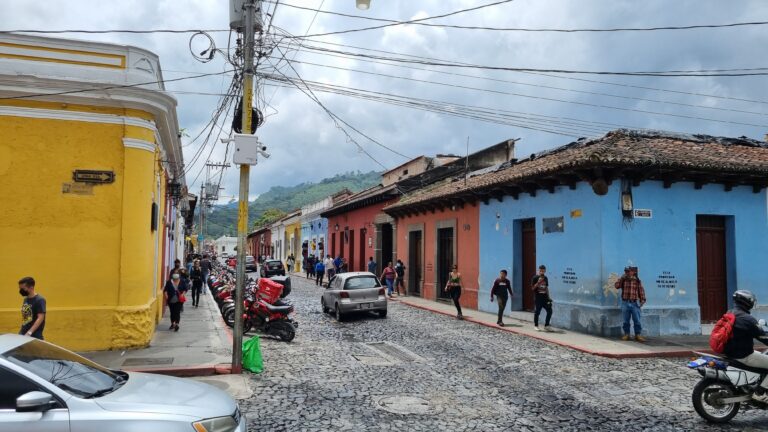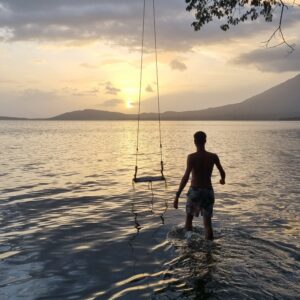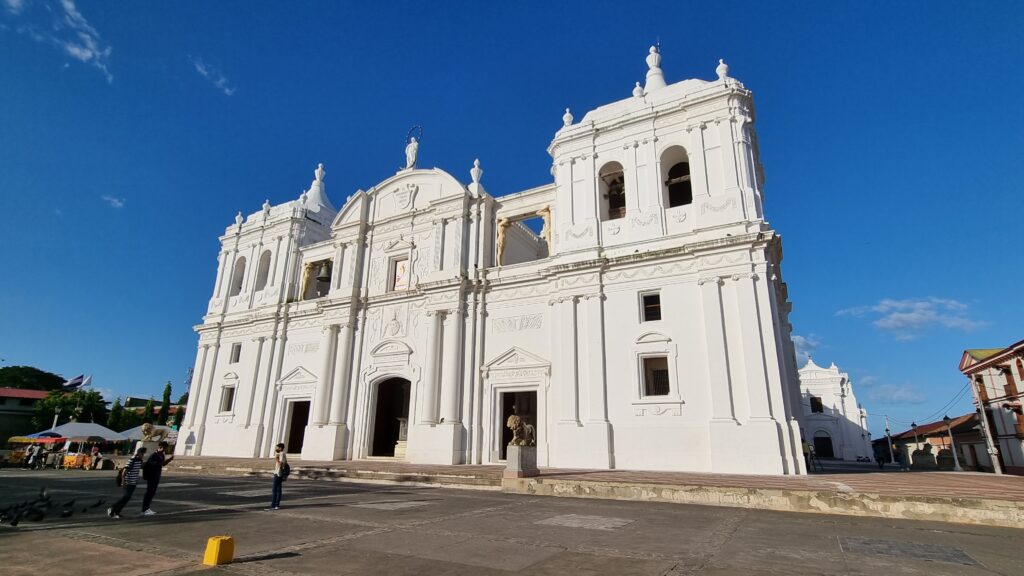Central America Guide
From Guatemala to Costa Rica, all you need to know about Centro America in a nutshell!
Central America is a region located in the southern part of North America, consisting of 7 countries: Belize, Costa Rica, El Salvador, Guatemala, Honduras, Nicaragua, and Panama. It is bordered by Mexico to the north and Colombia to the south. The region is known for its diverse geography including tropical forests, active volcanoes, and long stretches of coastline. The nature in Central America is a major draw for tourists and a critical component of the region’s economy The region has a rich cultural heritage, with a mixture of indigenous, African, and European influences. The economies of Central America are largely based on agriculture and tourism. Here you will read about the four most attractive countries of the continent. From North to South: Guatemala, El Salvador, Nicaragua and Costa Rica. A highly recommend route to travel!
#1 Guatemala
Guatemala is the most populous country in Central America with a population of over 17 million people, where Spanish is the official language and the currency is the Quetzal. The country is known for its rich Mayan history and cultural heritage, as well as its natural beauty including landmarks such as Tikal, Antigua and Lake Atitlán. In addition to this, the people of Guatemala are very diverse and friendly, with a rich cultural heritage that is influenced by indigenous Mayan traditions, Spanish colonial history as well as some modern Western values. Families and the community are highly valued, and hospitality and warmth towards visitors are common cultural traits. Despite the country facing socio-economic challenges, such as poverty and inequality, the people of Guatemala are known for their resilience and positivity. Within the country, travelling around might be a bit hard, but take the time and you will fall in love with the people, culture and nature. Lastly, Guatemala is known as one of the best countries to learn and improve your Spanish language, because the people speak clear and slowly, without huge dialects. Guatemala is definitely one of my favorite countries of Central America, and I would definitely get back here!
When in Guatemala, I propose you visit:
- Antigua: A colonial-era city known for its well-preserved Spanish Baroque architecture
- Tikal: An ancient Mayan city with towering pyramids and temples
- Lake Atitlán: A stunning crater lake surrounded by picturesque towns and traditional villages
- Chichicastenango Market: One of the largest indigenous markets in the world
- Flores: A charming island town in the middle of Lake Petén Itzá
- Semuc Champey: A series of turquoise pools and waterfalls
- Volcanoes: The country is home to several active and dormant volcanoes, offering opportunities for hiking and exploring











#2 El Salvador
El Salvador is a Central American country with a population of approximately 6.5 million people. It is the smallest and most densely populated country in Central America. The country has a rich culture, including indigenous Native American and Spanish colonial influences. As all the Central American countries except Belize, Spanish is the official language. Funny enough is the currency the US dollar, and you can also pay with Bitcoin as one of the first countries ever in the world! El Salvador has a mixed economy with agriculture, industry, and services sectors. The capital, San Salvador, is however not really worth a visit.
When in El Salvador, I propose you visit:
- Tazumal: One of the largest Mayan ruins in Central America.
- Santa Ana Volcano: The highest volcano in El Salvador, offering scenic views.
- Coatepeque Lake: A crater lake surrounded by lush greenery and volcanoes.
- Catedral de San Miguel: A colonial-style cathedral in the city of San Miguel.
- Playa El Tunco: A popular surf beach on the Pacific coast.
- Tamanique Waterfall: A scenic waterfall located in the jungle.
- Joya de Cerén: A UNESCO World Heritage Site and an archaeological treasure.
Visit Papaya Lodge hostel in La Libertad
Due to the still relatively unknown travel status of El Salvador, hosting and booking branches like Hostelworld are not yet fully developed. Therefore, you will discover that it can sometimes be difficult to find the right place to stay. This is also the case in perhaps the most attractive backpacker’s location in the country: El Tunco (or La Libertad as it is often called as well). Here you will however find one very beautiful hostel: The Papaya Lodge. It offers free breakfast, is right in the center of the town, has a swimming pool, is cheap, as well as dorms with very good air conditioning. The only thing that you have to keep in mind, is that it is often old out through the Hostelworld app, but this is not the case. They just do not place all the dorms and beds online. Therefore, I propose you just walk by, and they will have a bed for you for sure!
Weather conditions El Salvador
El Salvador has two distinct seasons: a rainy season and a dry season. The rainy season typically runs from May to October, with the heaviest rainfall in September and October. The dry season runs from November to April, with relatively little rainfall. Temperatures in El Salvador are generally warm throughout the year, with average temperatures ranging from 18-30 Celsius depending on the season. Humidity levels are high year-round, particularly during the rainy season. Coastal areas tend to be hotter and more humid than inland regions.
Check out the best hiking shoes for hiking through Central America:
#3 Nicaragua
Nicaragua is one of the most beautiful countries in Central America with a huge diverse range of landscapes and natural wonders. It offers a variety of scenic and breathtaking views, from the active volcanoes and lush tropical forests of the Masaya Volcano National Park to the white sand beaches and crystal-clear waters of San Juan del Sur. Nicaragua is also home to a rich cultural heritage, with colonial cities like Granada and León showcasing well-preserved architecture and vibrant street life. Overall, Nicaragua’s beauty and rich history make it a fascinating destination for travelers. In addition, the locals are very welcoming, enough party options, and the west side of the country is easy to travel within short distances! I can 100% recommend this country!
When in Nicaragua, I propose you visit:
- León: A colonial city with well-preserved architecture, museums, and a rich cultural heritage.
- Masaya Volcano National Park: Home to two active volcanoes and a wildlife-rich tropical forest.
- Granada: A colonial city with vibrant street life, charming architecture, and a thriving arts scene.
- Ometepe Island: A unique volcanic island in Lake Nicaragua, known for its rich wildlife, stunning landscapes, and indigenous history.
- San Juan del Sur: A popular beach destination with a laid-back atmosphere and plenty of opportunities for water sports and eco-tourism.
- Isla de Otoque: A small island with stunning white sand beaches and crystal-clear waters, perfect for snorkeling and diving.
- Matagalpa: A coffee-producing region known for its rolling hills, scenic routes, and vibrant local culture.
The Ometepe Island got a special place in my heart due to its beautifulness, freedom, variety and lay-back live. The two volcanos along with the all the wildlife available made it come into the list of Top 5 – Nature Wonders in the world. Want to read more about it?
Full article about Nicaragua coming soon!

Check out the Top 5 - Nature Wonders
With Isla the Ometepe included...
#4 Costa Rica
Costa Rica is the most popular Central American country known for its abundant wildlife, diverse natural landscapes, and commitment to sustainability. It is a popular tourist destination due to its tropical climate, beautiful beaches, and eco-friendly initiatives. The country has a stable democracy and a strong economy, driven in part by its growing tourism industry. Costa Rica is also famous for its progressive environmental policies, including the protection of over 25% of its land as national parks and reserves.
When in Costa Rica, I propose you visit:
- Manuel Antonio National Park – a stunning coastal park with beautiful beaches and abundant wildlife.
- Monteverde Cloud Forest Reserve – a unique ecosystem with a rich biodiversity of plants and animals, including many species of birds and butterflies.
- Arenal Volcano – a recently inactive volcano that offers opportunities for hiking, hot springs, and wildlife viewing.
- Tortuguero National Park – a protected area that serves as a nesting ground for sea turtles, and is also known for its diverse array of wildlife and jungle landscapes.
- Corcovado National Park – a remote park with some of the country’s most pristine rainforests and diverse wildlife, including monkeys, jaguars, and hundreds of bird species.
- Guanacaste Province – a region known for its dry tropical forests, stunning beaches, and adventure tourism opportunities.
- Puntarenas – a bustling beach town with a bustling port and vibrant nightlife scene.
There is however one major drawback about Costa Rica that I have to make you aware of. Due to large tourism Costa Rica has nowadays as of its reputation of being the safest country on the continent, it has become very very expensive. Activities such as zip lining in Monteverde, rafting in La Fortuna or regular stuff like washing clothes or drinks at a bar, are nothing compared to the cheap prices of the countries you have read about above here.



























